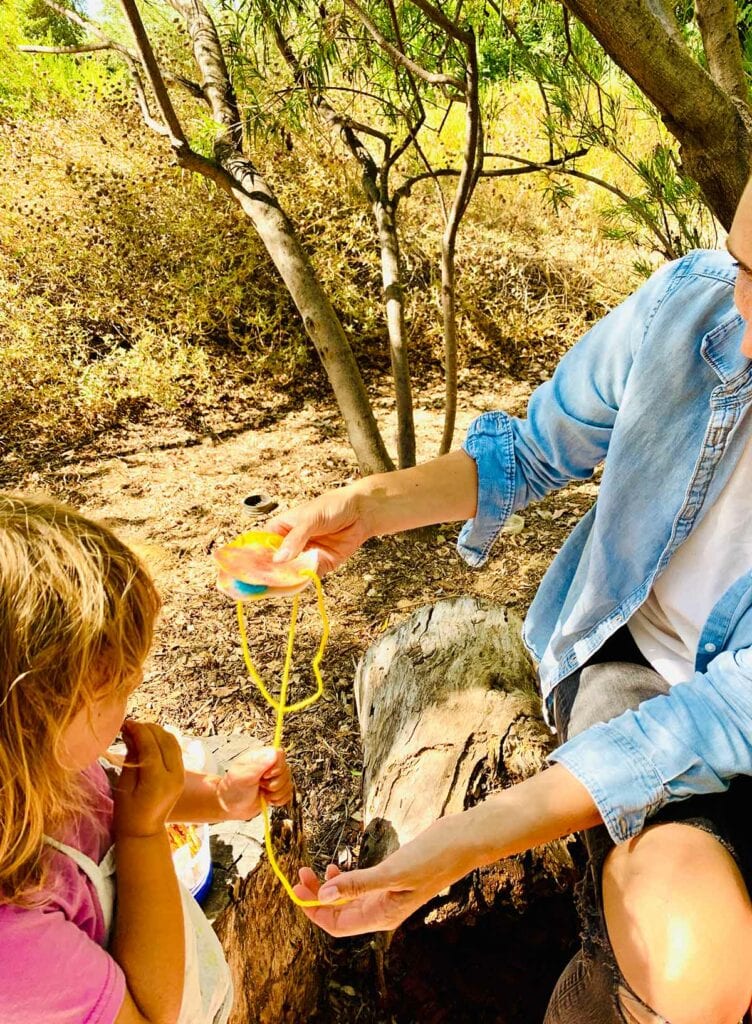
It is pretty common in early childhood for children to become interested in whatever we Moms are doing, and it is a great natural instinct, since this is how children learn.
Remarkably, many fundamental skills can be learned on sight without practice. Whether they are intentionally modeled to children or not, it is called modeling–Albert Bandura. They are then practiced in pretend play and ultimately mastered when the conditions are ripe–Jean Piaget.
One of the things parents can do to teach in a day is to remember that we are modeling for our children, so we might as well become as intentional as possible. Mindfully stir the spaghetti, mmm and ommm. Another way to teach is to be aware of the zone of proximal development–Vygotsky. That is a remarkably nerdy way to say, giving children the opportunity to do something just beyond their current abilities and pay grade. In the picture above L. is sewing with her mother. While L. would likely be able to accomplish putting a laced yarn through a hole, these two are making a puppet, so the effort is greater. Two pieces of wool felt, and stuffing inside, need to be held together while sewing the yarn through the holes. L.’s Mom scaffolds this process by holding the puppet steady and talking her through it. This teaches L. through both modeling and using the zone of proximal development. L. is just about able to do the skill on her own, and she can do it easily with support.
These same principles can be done throughout the day. If your little one wants to fold laundry, which literally means tossing it over their shoulders, give them their own basket and pile. Not everyone has the patience, time, or ability to do this every day. But, surely all of us could do it once a day or at least once a week. The benefits of intentional teaching–particularly in this Lifeways model–are innumerable.


 Mommy and Me Art
Mommy and Me Art
Leave a Reply